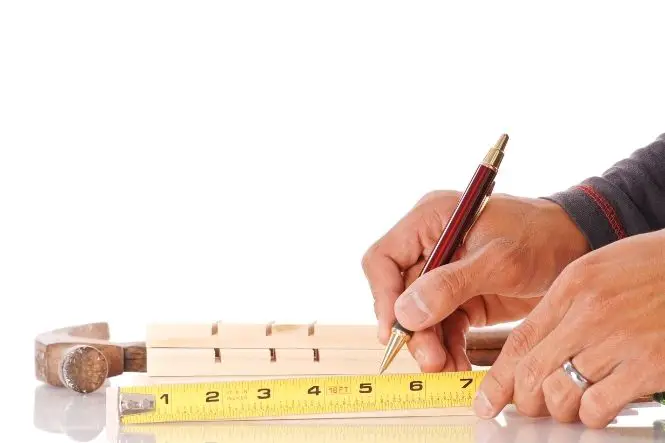A clinometer (also known as a declinometer or inclinometer) is used to measure the steepness of a slope, and can be used to work out the heights of tall things, such as buildings or trees.
Table of Contents
Making a Clinometer
Take a plastic 180-degree protractor, and make a small hole where the angles meet, at the centre of the straight side. Thread one end of a piece of fishing line (this needs to be about 10 cm longer than the protractor) and tie it on tightly. Tie a large nut, stone or piece of modelling clay to the other end of the fishing line to act as a weight. Tape a drinking straw to the straight edge of the protractor to use as a sight or scope.
Using a Clinometer to Measure a Slope
Find something up a slope that is at about eye height, and then look along the sight (the straw along the straight side of the protractor) at this object. Wait until the weighted line has stopped swinging, and then carefully hold it against the protractor. Read the angle off the protractor (if the numbers are above 90, subtract 90 to get the correct value). It might be easier to get a partner to read the angle on the protractor.
Using a Clinometer to Estimate Heights
Clinometers can also be used to measure the heights of things such as trees (for other methods see ‘How Tall is It? Measure Something Tall Without Climbing It’).
Find an area of flat ground with a tall tree, and plenty of room to walk away from the tree. Look through the clinometer to find the top of the tree, and walk away from the tree in a straight line until the angle on the clinometer reads 45 degrees. The distance between you and the tree is now the same as the distance from the trunk of the tree at eye level to the top of the tree. Measure the distance from the clinometer to the tree – this gives the height of the tree from eye level to the top. Add the height from the ground to the clinometer (eye level) to total an estimate of the height of the tree.
This works because, by walking away from the tree until the clinometer reads 45 degrees, it makes a right-angled triangle (isosceles triangle) between the clinometer, the tree trunk and the top of the tree. The distance along the base of a right-angled triangle is always the same as the height.
Uses of Clinometers
Clinometers are used for many things. People who work in forests use clinometers to measure the heights of trees. Builders and architects use them to measure the heights of buildings.
Clinometers are also used by surveyors to measure the steepness of slopes, or the difference between two slopes.
Other uses include working out latitude (the distance north or south of the Earth’s equator); measuring movement in buildings; monitoring the angles of the booms in cranes; checking the angle of drilling for wells; or showing the pitch and roll of a ship or plane.







